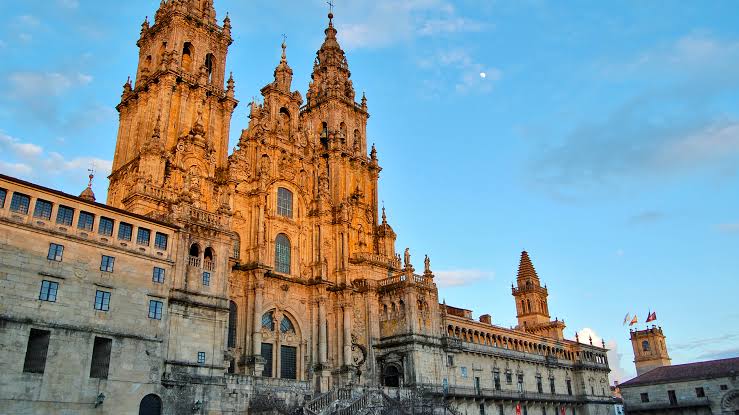
Finding God on the Camino de Santiago
The Camino de Santiago, or the Way of St. James, is not just a pilgrimage; it is a profound journey of self-discovery and spiritual renewal. Spanning hundreds of miles across Spain and parts of France and Portugal, the Camino has attracted pilgrims for centuries. Many embark on this trek seeking spiritual enlightenment, healing, or a deeper connection with God. This article explores how the Camino serves as a backdrop for personal and spiritual transformation, inviting individuals to encounter the divine in unique and powerful ways.
The Historical and Spiritual Context
The Camino de Santiago has its roots in the 9th century, when the remains of St. James, one of Jesus’ apostles, were believed to have been discovered in the region of Galicia. This discovery spurred the growth of pilgrimage to Santiago de Compostela, where the cathedral housing St. James’s relics became a focal point for Christian worship. Over the centuries, the pilgrimage evolved into a spiritual journey that transcended its religious origins, welcoming people from all walks of life.
Walking the Camino is more than a physical challenge; it is an opportunity to reflect on one’s life, beliefs, and relationship with God. Pilgrims often report a deep sense of connection with the divine, facilitated by the beautiful landscapes, historic sites, and the shared experiences of fellow walkers.
The Journey as a Metaphor for Life
As pilgrims traverse the varied terrain of the Camino—from the rolling hills of the Pyrenees to the serene plains of Castile—they find that the physical journey mirrors their internal struggles and triumphs. Each step can represent a prayer, a question, or a moment of gratitude. The repetitive rhythm of walking allows for contemplation and meditation, creating a space where one can engage with God or whatever higher power they believe in.
Many pilgrims experience moments of epiphany along the route. These moments often come during times of solitude or while sharing stories with fellow travelers. For some, the act of walking becomes a form of prayer—a physical manifestation of their search for meaning and connection. The simplicity of walking, combined with the beauty of nature, fosters an environment conducive to spiritual reflection.
Community and Connection
One of the most remarkable aspects of the Camino is the sense of community it fosters. Pilgrims from diverse backgrounds, beliefs, and cultures come together, united by a common goal. This shared experience creates bonds that transcend language and tradition. In hostels and cafes along the route, stories are exchanged, and friendships are formed. This communal aspect often leads to discussions about faith, doubt, and the search for God.
As pilgrims share their personal journeys, they often find solace in knowing they are not alone in their struggles. Many recount moments of profound connection with others, where the act of listening becomes a form of ministry. These interactions can serve as a reminder of God’s presence in everyday life and the importance of community in spiritual growth.
Nature as a Pathway to the Divine
The natural beauty of the Camino cannot be overstated. The ever-changing landscape—from lush forests and rugged mountains to tranquil fields—serves as a powerful reminder of creation. Many pilgrims find that time spent in nature enhances their spiritual experience. The stillness of the woods, the sound of flowing streams, and the vastness of the sky can evoke a sense of the divine.
Nature often inspires moments of awe and wonder, prompting reflections on life’s mysteries. Pilgrims may find themselves praying amid the beauty of their surroundings, feeling closer to God in the stillness of the wilderness. The Camino invites walkers to slow down, breathe deeply, and appreciate the world around them, fostering a deep sense of gratitude.
Rituals and Spiritual Practices
Pilgrims often engage in various rituals and spiritual practices throughout their journey. Some carry a small cross or a pilgrim’s shell as symbols of their faith, while others participate in communal prayers or attend Mass at the many churches along the route. These rituals provide structure and meaning to the pilgrimage, grounding the experience in spirituality.
One common practice is the “Pilgrim’s Blessing,” which takes place at the beginning of the journey. This simple ritual acknowledges the pilgrim’s intentions and seeks divine guidance for the path ahead. Many pilgrims also take time to reflect on their motivations for walking, writing in journals or praying for specific intentions.
The Arrival in Santiago
Reaching Santiago de Compostela is often a deeply emotional experience. For many, it marks the culmination of weeks of walking and reflection. The moment of entering the city and approaching the cathedral can be overwhelming, filled with gratitude, joy, and sometimes grief for the journey that is ending.
The Pilgrim’s Mass at the cathedral is a highlight for many, providing an opportunity to give thanks and reflect on their experiences. The ritual of gathering with fellow pilgrims to celebrate the journey can be a profound encounter with the divine, reinforcing the idea that the pilgrimage is as much about the journey as it is about the destination.
Transformative Experiences
Pilgrims often leave the Camino with more than just a certificate of completion; they carry transformative experiences that alter their understanding of faith, community, and themselves. Many report a renewed sense of purpose, a deeper connection to God, and a greater appreciation for life’s simple joys. The Camino teaches that the search for God is not a solitary endeavor but one enriched by the experiences and stories of others.
Finding God on the Camino de Santiago is a multifaceted journey that invites pilgrims to explore their faith in new and profound ways. Through the physical act of walking, the beauty of nature, the power of community, and the rich tapestry of rituals, individuals can encounter the divine in their own unique manner. The Camino is not just a path to Santiago; it is a path to understanding oneself and one’s relationship with God, reminding us that spirituality can be found in both the journey and the destination.








